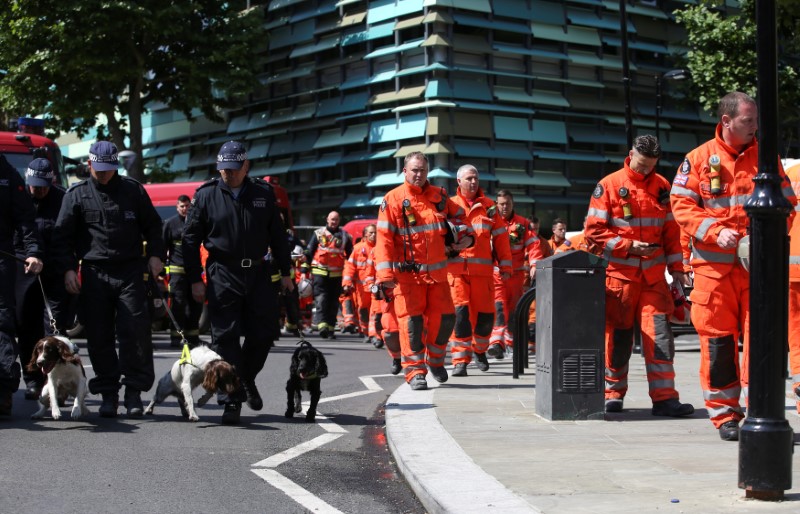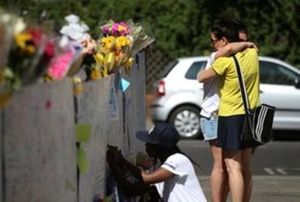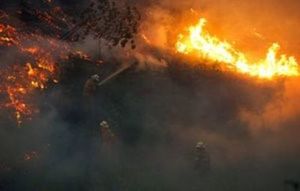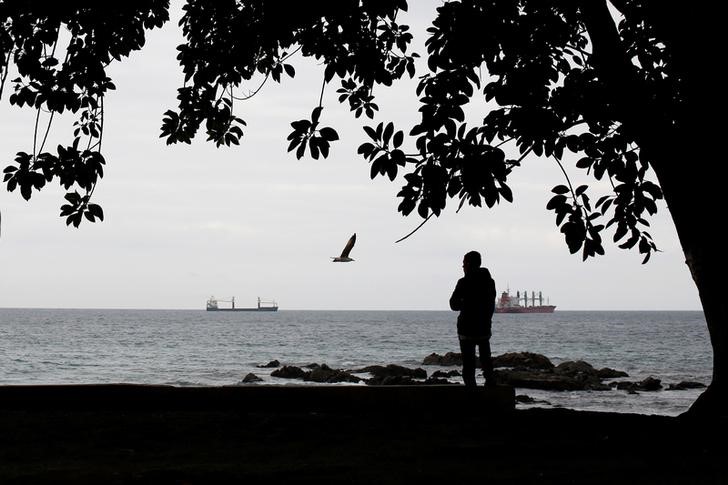
By Estelle Shirbon and William James
LONDON (Reuters) – The death toll from a fire that ravaged a London tower block last week has risen to 79, police said on Monday, as the government tried to show it was improving its handling of a tragedy that has angered the public.
Fire broke out in the 24-storey Grenfell Tower, a social housing block in Kensington, in western London, in the early hours of Wednesday, trapping residents inside as it tore through the building with terrifying speed.
“I believe there are 79 people that are either dead, or missing, and sadly I have to presume are dead,” Metropolitan Police Commander Stuart Cundy told reporters.
He said five of the dead had been formally identified, and it would be a slow and painstaking task to identify the others.
A minute’s silence was held across Britain at 1000 GMT (6.00 a.m. ET) to honor the victims of the fire – a painfully familiar ritual after the country has been hit by three deadly attacks by militants in London and Manchester since March.

Members of the emergency services arrive to attend a minute’s silence for the victims of the Grenfell Tower fire near the site of the blaze in North Kensington, London, Britain, June 19, 2017. REUTERS/Marko Djurica
The attacks and the fire have come at a particularly difficult time for Prime Minister Theresa May, who was weakened by the loss of her parliamentary majority in a June 8 election and faces arduous talks on Britain’s exit from the European Union.
Cundy became visibly upset as he described conditions in the charred Grenfell Tower, where a search and recovery operation is expected to last weeks.
“I was in there myself and went all the way to the top floor and it is incredibly hard,” he said, before pausing as tears welled up in his eyes.
“It is incredibly hard to describe the devastation in some parts of the building,” he continued, his voice breaking.
“It is a truly awful reality that there may be some people that we may not be able to identify due to the intensity of the fire,” he said before pausing again to recover himself.
Emergency services have been widely praised for how they handled the fire, but the local community has accused the government of a slow and inadequate response. May has come under personal attack for failing to meet residents during her first visit to the site.

People react next to tributes to the victims of the Grenfell Tower fire near the site of the blaze in North Kensington, London, Britain, June 19, 2017. REUTERS/Marko Djurica
“NOT GOOD ENOUGH”
At a daily briefing with reporters, May’s spokeswoman said that on a second visit to the area, during which the prime minister was booed and heckled, May had listened carefully to the experiences of those on the ground.
“That’s why she totally accepted that it (the government response) hadn’t been good enough. She understood that immediate action needed to be taken to speed things up, and that’s what she’s done,” the spokeswoman said.
She said the terms of reference of a public inquiry into the blaze were being drafted, and the government had now contacted all local authorities in England asking them to identify any safety concerns in light of the tragedy.
However, May did not support a proposal put forward by Jeremy Corbyn, leader of the opposition Labour Party, to seize unoccupied properties to re-house survivors of the fire, the spokeswoman said.
“Occupy it, compulsory purchase it, requisition it – there’s a lot of things you can do,” Corbyn said on Sunday during an interview on ITV.
Grenfell Tower is located in a pocket of social deprivation within the borough of Kensington and Chelsea, one of Britain’s wealthiest areas. The fire has led to national soul-searching about inequalities and neglect of the poor.
Briefing reporters at New Scotland Yard, London’s police headquarters, Cundy said a criminal investigation into the tower blaze would be exhaustive. He said 250 investigators were looking at all criminal offences that may have been committed.
“Whilst it will look at the how, perhaps more importantly, it will also look at why this happened,” Cundy said. The investigation will include areas such as the construction, renovation and maintenance of the building and fire safety procedures, he said.
Cundy said five people who had been reported as missing in the fire had now been found and were safe and well.
He said the death toll of 79 could still change if anyone reported as missing was found alive, of if anyone was found in the ruined tower who had not been reported as missing.
“Whilst I’ve said I think there may be changes, I don’t think those changes will be as significant as the changes we’ve seen over the last few days,” he said.
The death toll was first given as 12, before being revised up to 17, then 30, then 58.
(Additional reporting by Paul Sandle, editing by Larry King)











